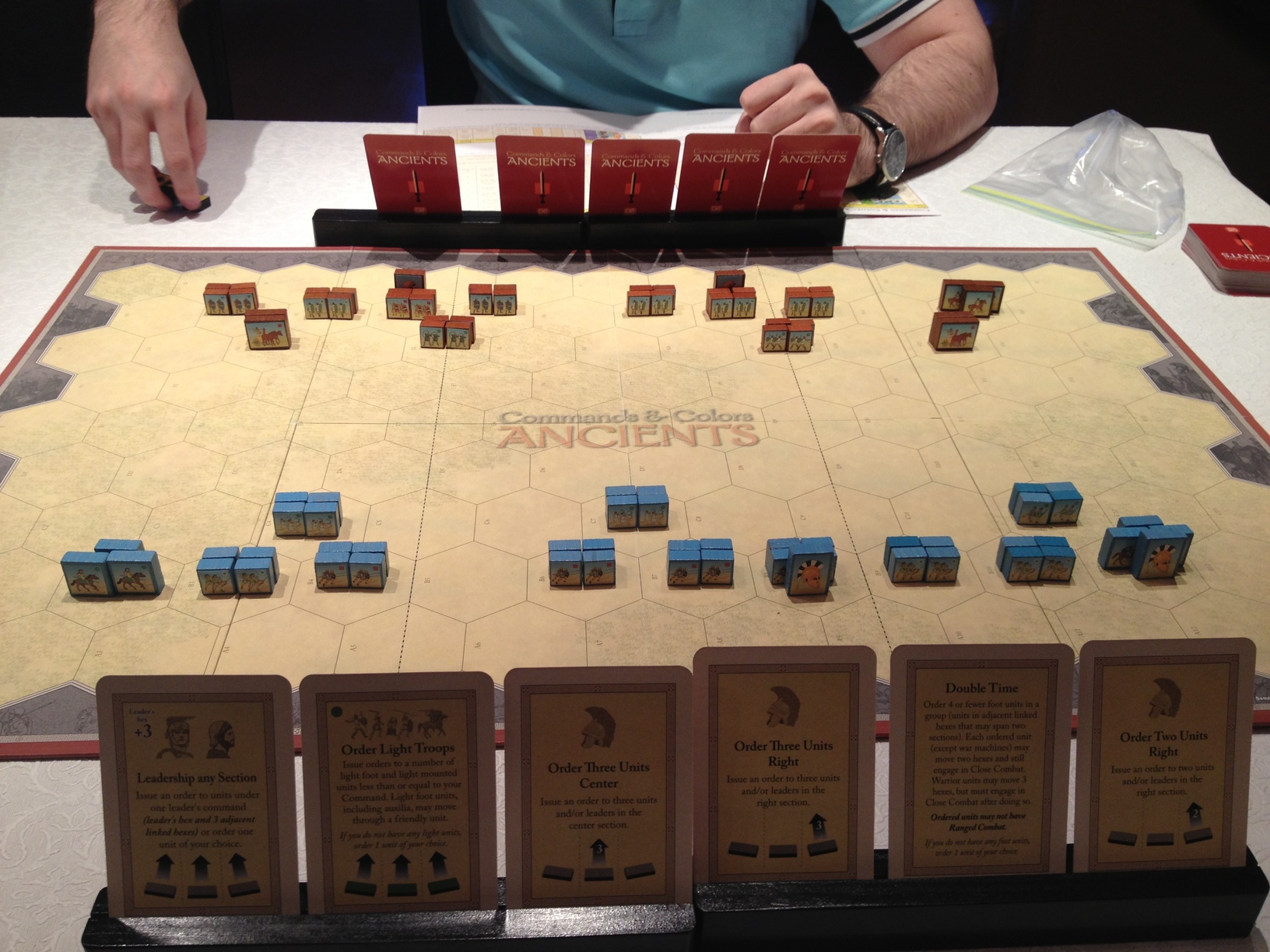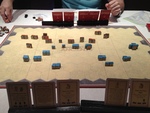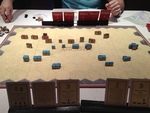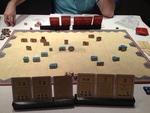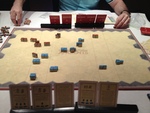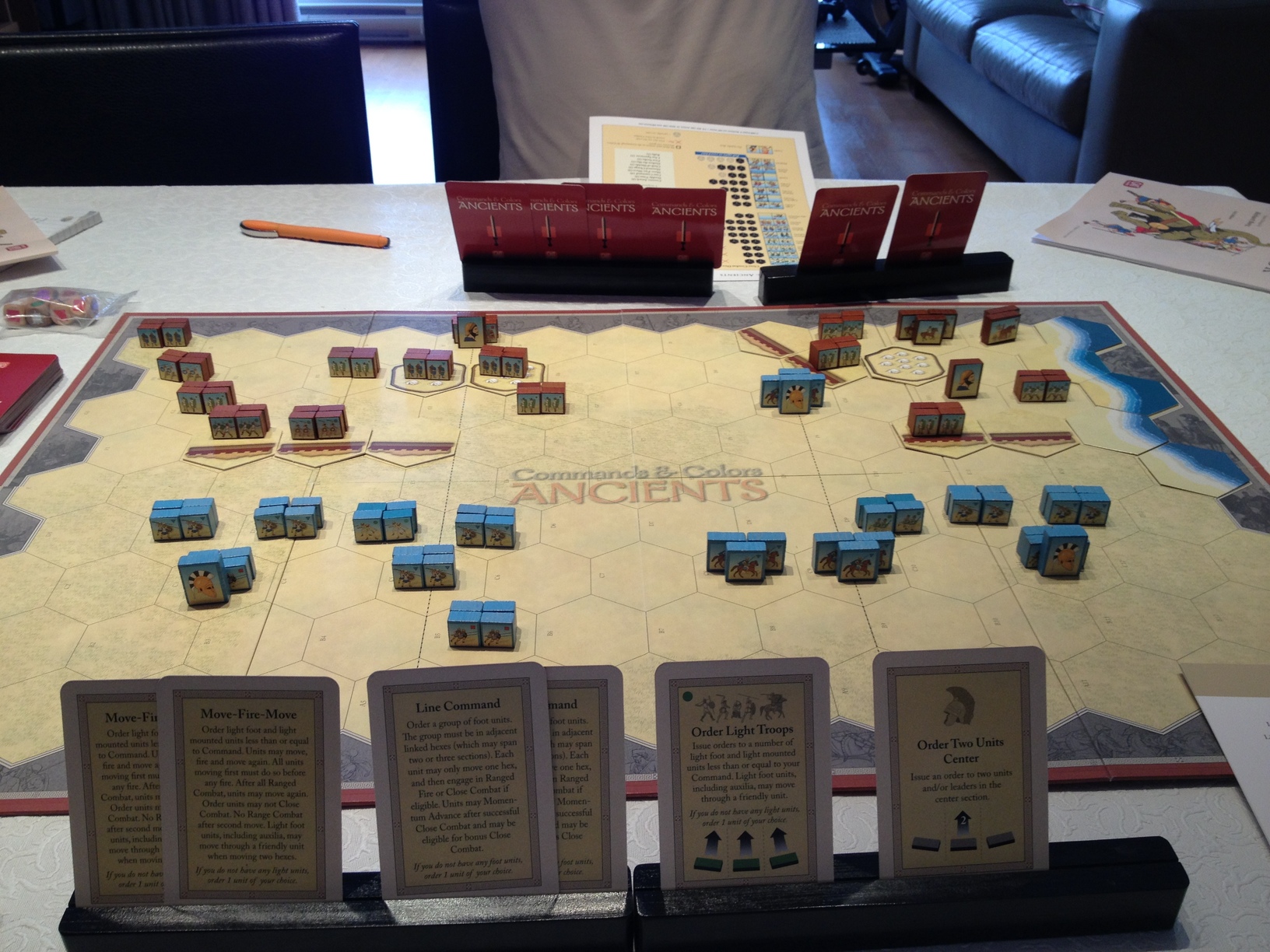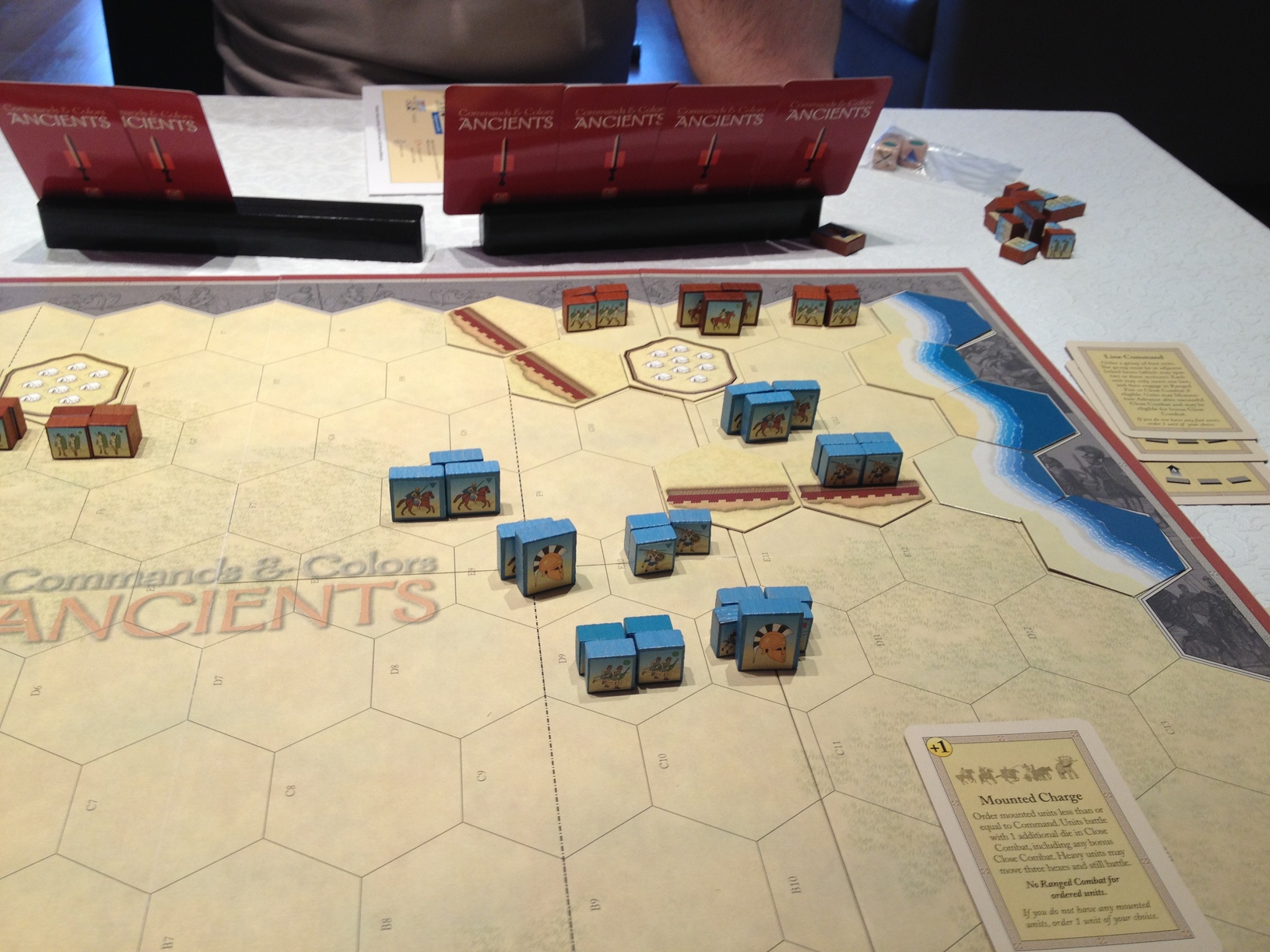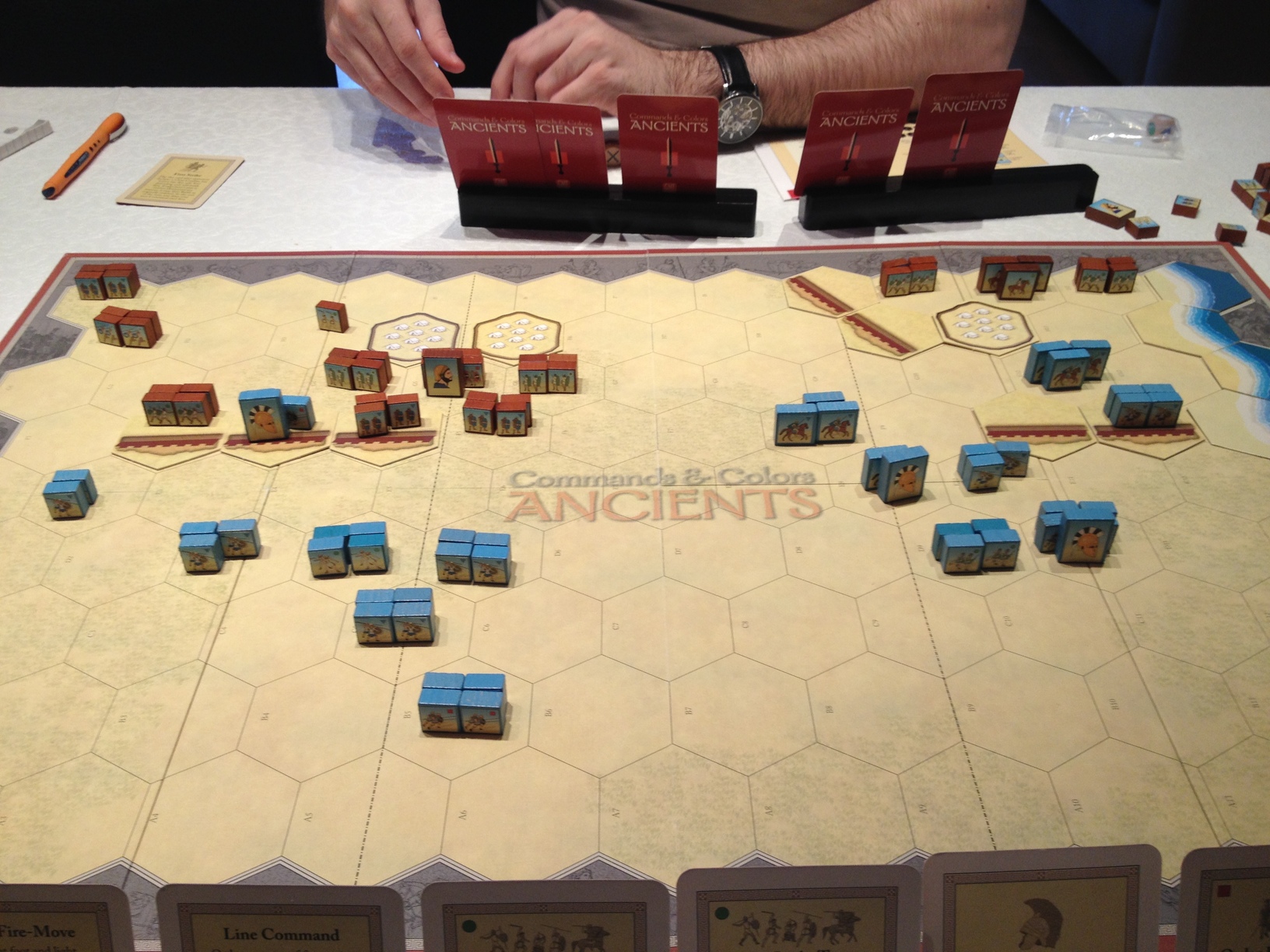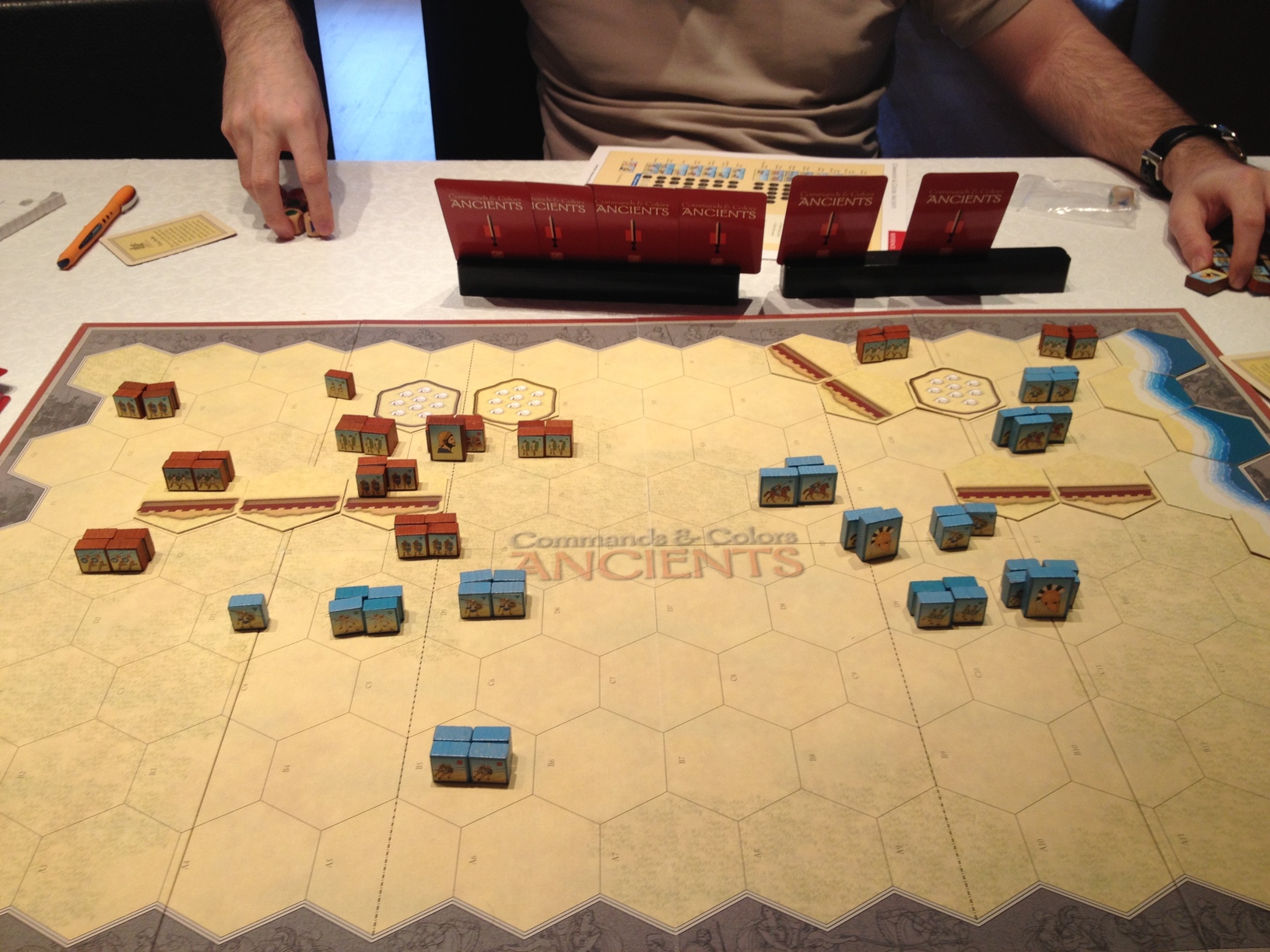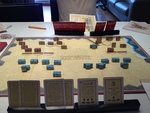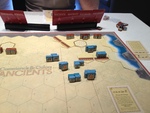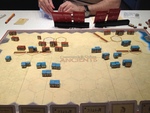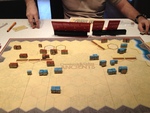When Alexander the Great died in 323 BC, he left no clear heir to the immense empire he had conquered. It was not long after his death that the Macedonian generals began to war among themselves over who would be the regent or successor to Alexander’s empire. By 305 BC they had given up on succession and began to carve out their own kingdoms. Successors is a four-player game based on those wars.
(Black) Antipater with Lysimachus
(Blue) Craterus with Leonnatus
(Yellow) Ptolemey with Antigonus
(Red) Perdiccas with Peithon
(Green) Rebels and independants
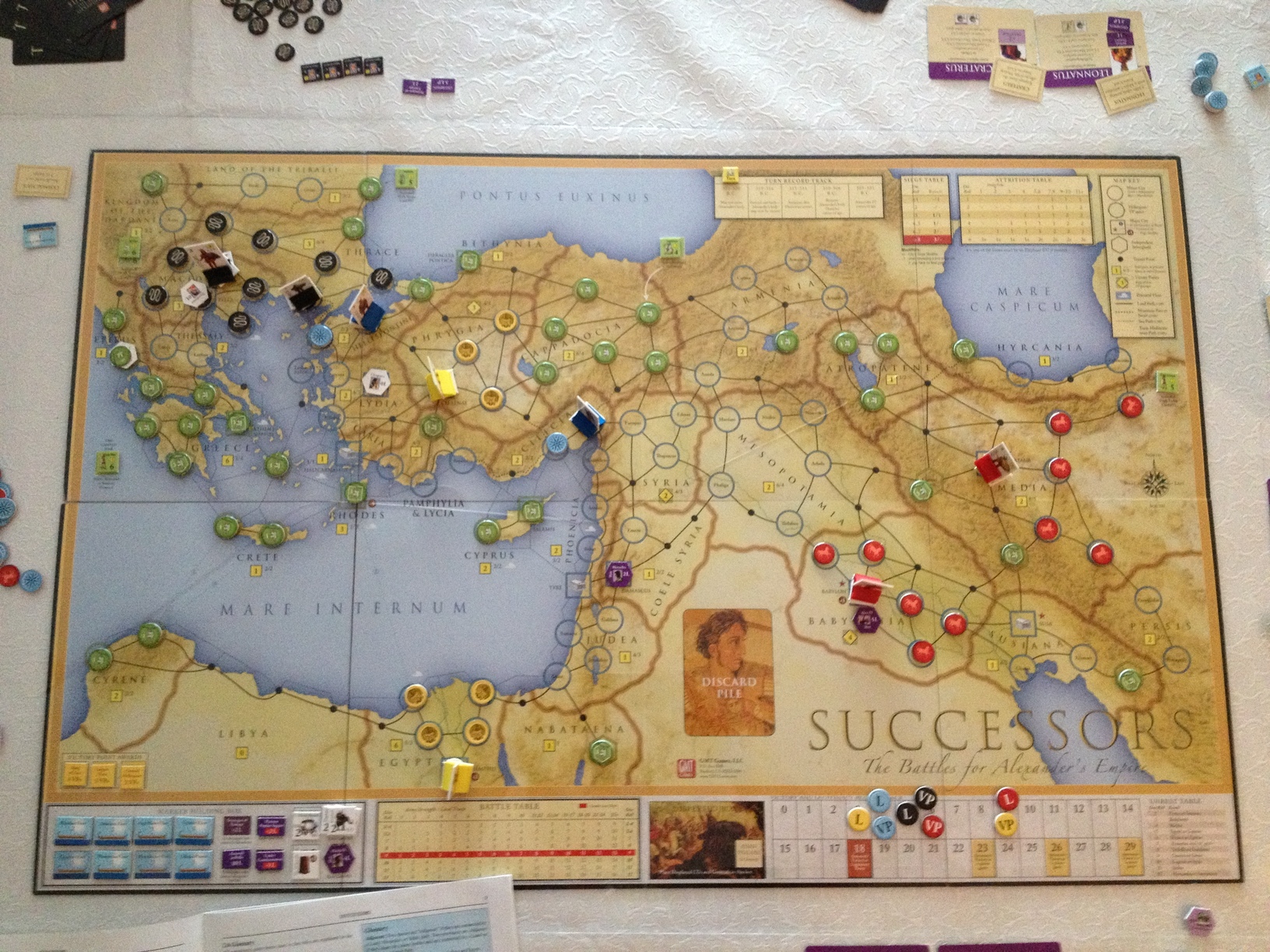
Turn 1 (323 - 320 BC): Macedonia is immediately hit by the Dardani from the West, who then go on to pillage Thrace before finally being defeated. Antipater (black) then turns his eye on the Greeks who have declared themselves independent following Alexander's death. Craterus and Leonnatus (blue) dislodge Antigonus (yellow), branded a usurper, from Phrygia, while adding Cappadocia to the empire and thus establishing a strong influence over Asia Minor. Antigonus flees to Halicarnassus to secure the city's fleet before moving on to Crete. Ptolemy (yellow) moves up the Levant securing it and the Phoenician fleet. Meanwhile, in the East, Perdiccas (Red) rushes to Damascus to grab Heracles, the bastard son of Alexander, which he brings back to Babylon for safekeeping with Alexander's baby son. Perdiccas then brings Mesopotamia under his influence. Meanwhile, Peithon (red) sacks the treasury of Ecbatana before moving to secure the Easternmost provinces of Persis and Susiana. Not long after he leaves, Media is brought to turmoil with the arrival of twenty three thousand Greek colonists heading back home.
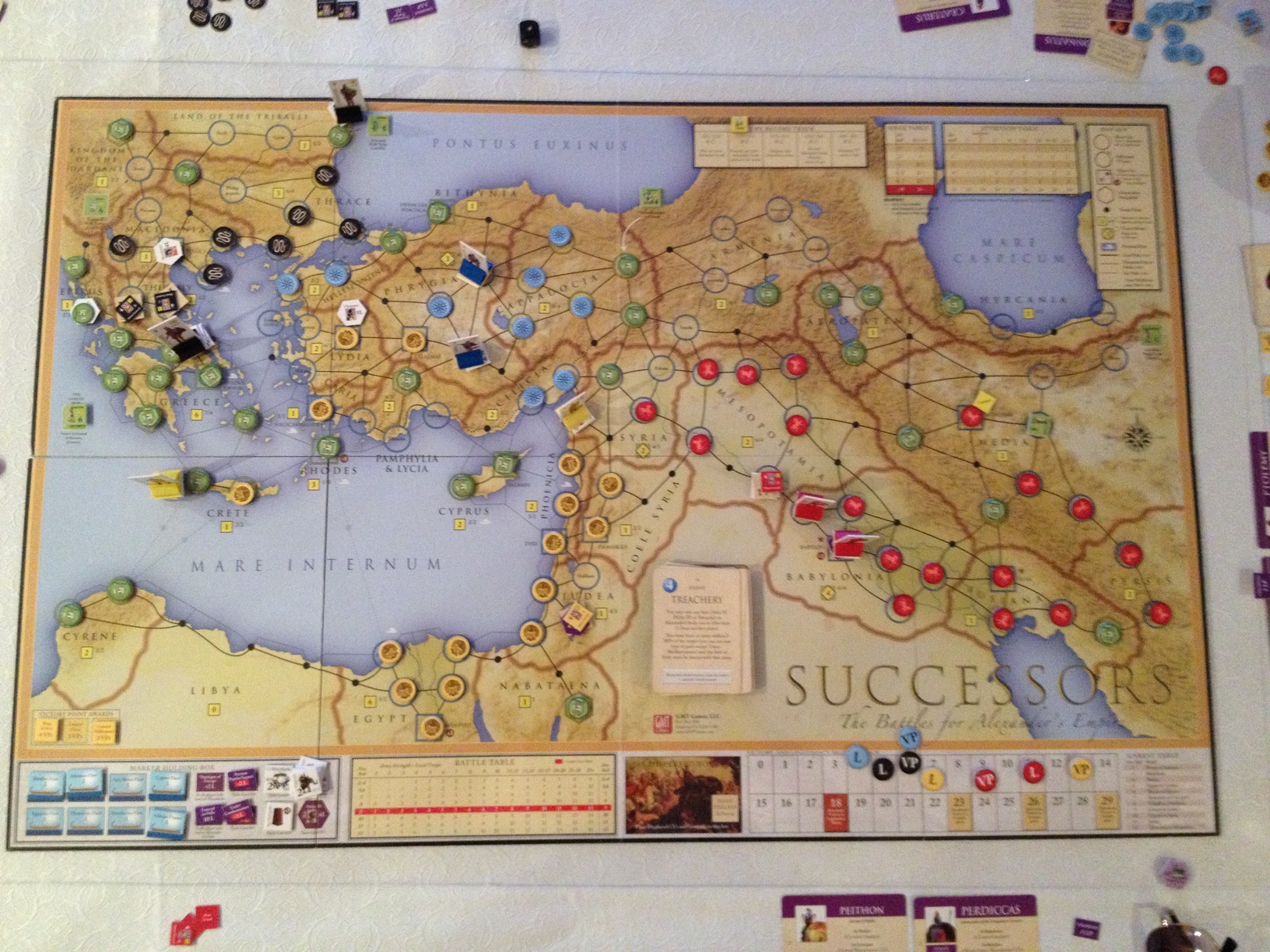
Turn 2 (319-316 BC): With Alexander's lavish funeral procession ready to depart Babylon with Perdiccas (red), the other generals prepare to block his route to Pella, lest he accrues enough legitimacy to be, without doubt, Alexander's successor. Craterus and Leonnatus (blue) prepare to block the way through Anatolia, while Antipater (black) finishes the reconquest of Greece, bringing the Athenian fleet under his control. With an uncertain path to Pella, Perdiccas and Peithon (red) instead decide to square off with Ptolemey (yellow) in Syria, but fail to engage before the silver shields flock to the latter and a stalemate ensues. Peithon attempts a bold attack near Damascus but is decidedly beaten and loses his mercenaries, the bulk of his army. Meanwhile, Antigonus (yellow) finishes the conquest of Crete before adding Rhodes and Cyprus to Ptolemey's dominion and a firm control of the sea. He then moves on to Pamphylia and Lydia. With no funeral procession forthcoming, Craterus (blue) moves to Syria with unclear intentions, while Leonnatus (blue) adds Lydia and Caria (Halicarnassus) to their dominion. In the East, Eumenes joins Perdiccas' camp (red) and lead the funeral procession with the two heirs into Media to the city of Ecbatana, where Alexander is buried. A third heir, Philip III, half brother of Alexander, is brought to Memphis by Ptolemey's men (yellow) for his security. These years close with the death of Antipater (black) who is replaceed by Polyperchon and with Demetrius joining his father Antigonus (yellow).
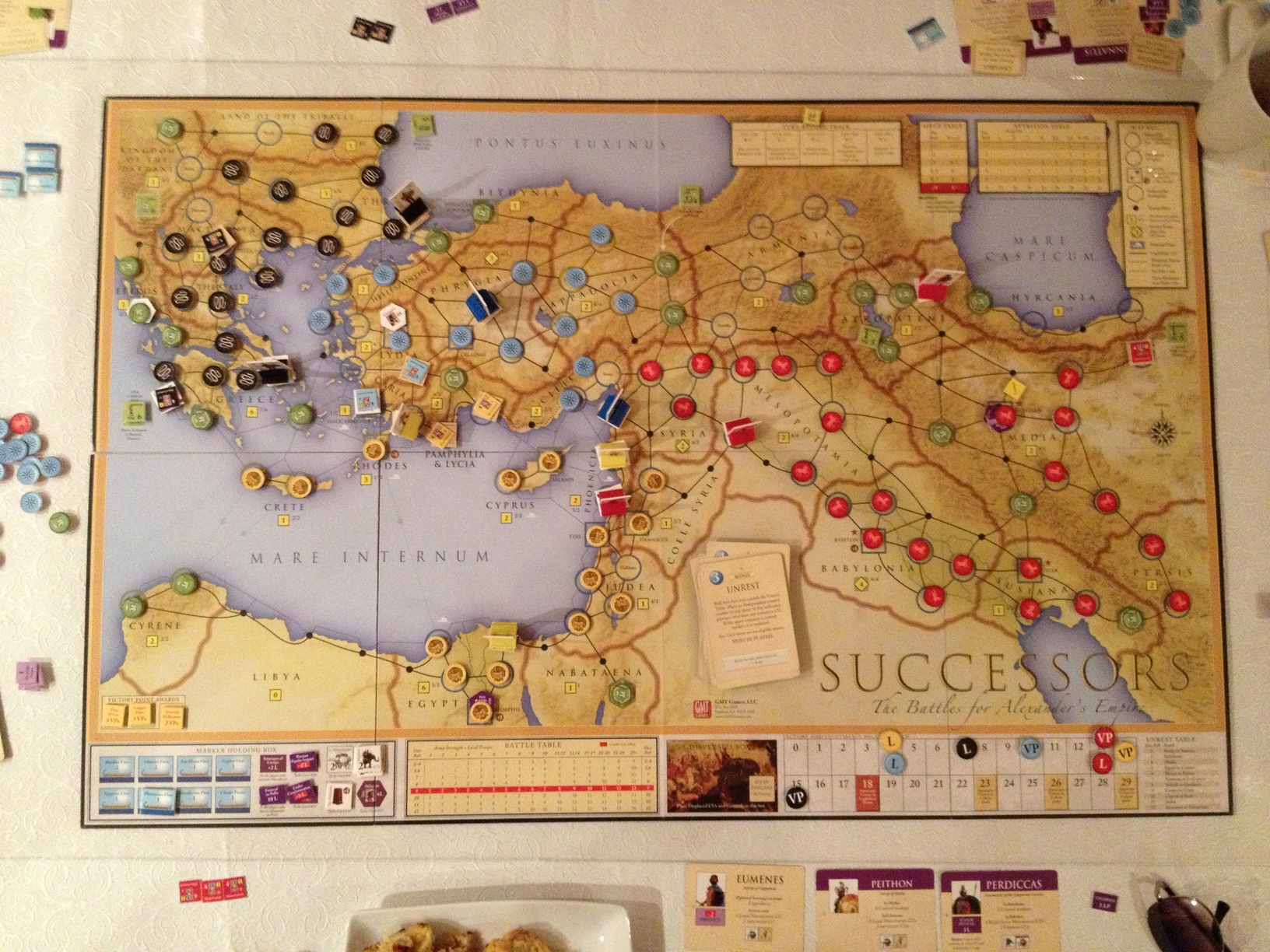
Turn 3 (315-311 BC): To fight the growing influence of Ptolemey (yellow), Perdiccas (red) enlisted the help of Polyperchon (black). While Perdiccas would fight Ptolemey in Phoenicia to deprive him of a fleet, Polyperchon would strike at Rhodes. The plan succeeded all too well, with Ptolemey retreating to Cyprus and his fleet completely destroyed by Polyperchon. With the threat of Ptolemey (yellow)thwarted, Craterus (blue) decided to strike into Syria to curb Perdiccas' (red) influence. Craterus pursued Peithon (red) throughout Syria but was ambushed in the desert when Perdiccas joined the latter to form a massive army. Craterus' forces were annihilated and he limped back to Cappadocia while an epidemic broke out among Perdiccas' army. Perdiccas and Peithon (red) separated their forces, with the former standing guard in Syria against Ptolemey (yellow) and Craterus (blue), while the latter headed south. Meanwhile, Leonnatus (blue) attempted to cross the bosphorus and enter Thrace, but was blocked by Lysimachus (black). Polyperchon (black), realizing that Peithon (red) was making a grab for Philip III, crossed the Mediterranean and battled the latter, defeating him. Peithon retreated back to the Levant while Demetrius (yellow) returned from an expedition in Cyrene to snatch Philip III and take him with him. Polyperchon (black) now decided to seize Egypt for himself, causing Ptolemey (yellow) and Peithon (red), bitter enemies for the previous years, to form an alliance against him. They both rushed to Egypt, but were too late. Despite a short revolt in Greece, Lysimachus (black), who had recently married the half-sister of Alexander, Thessalonike, became the successor to Alexander's empire due to his overwhelming influence.
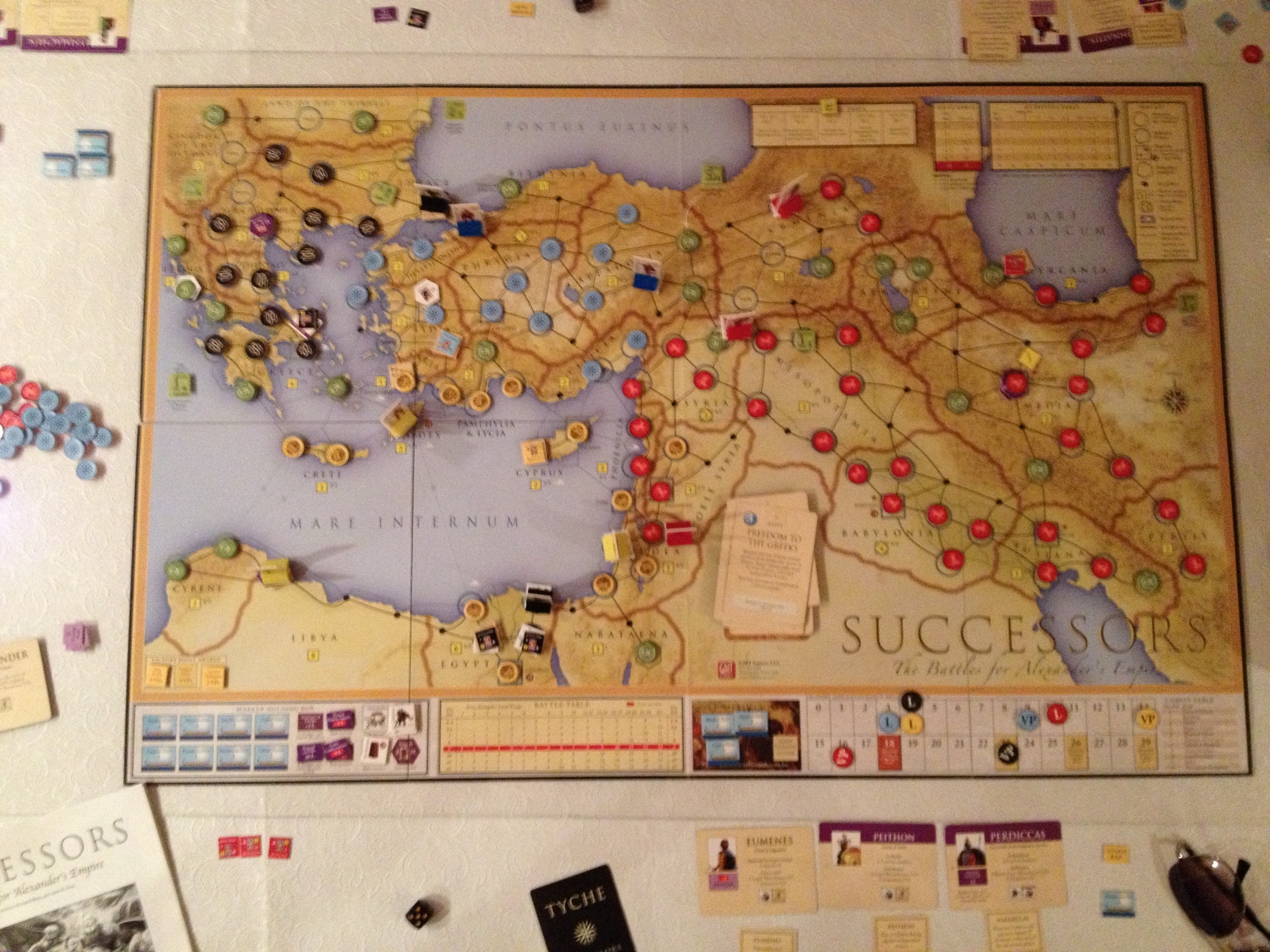
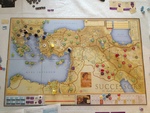
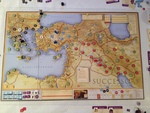
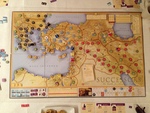
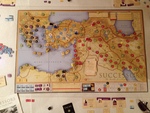
 Sunday, February 10, 2013 at 11:37PM
Sunday, February 10, 2013 at 11:37PM 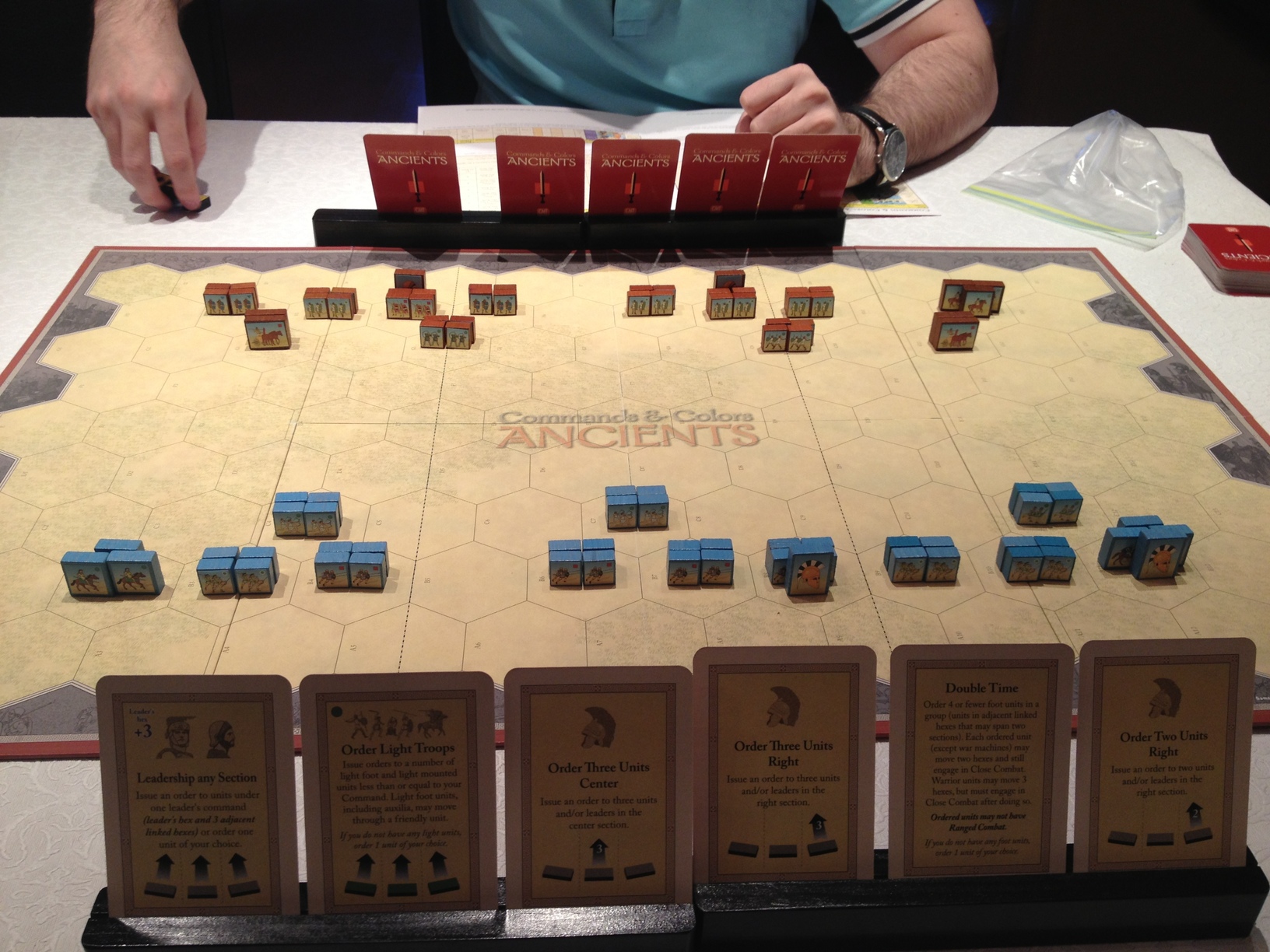
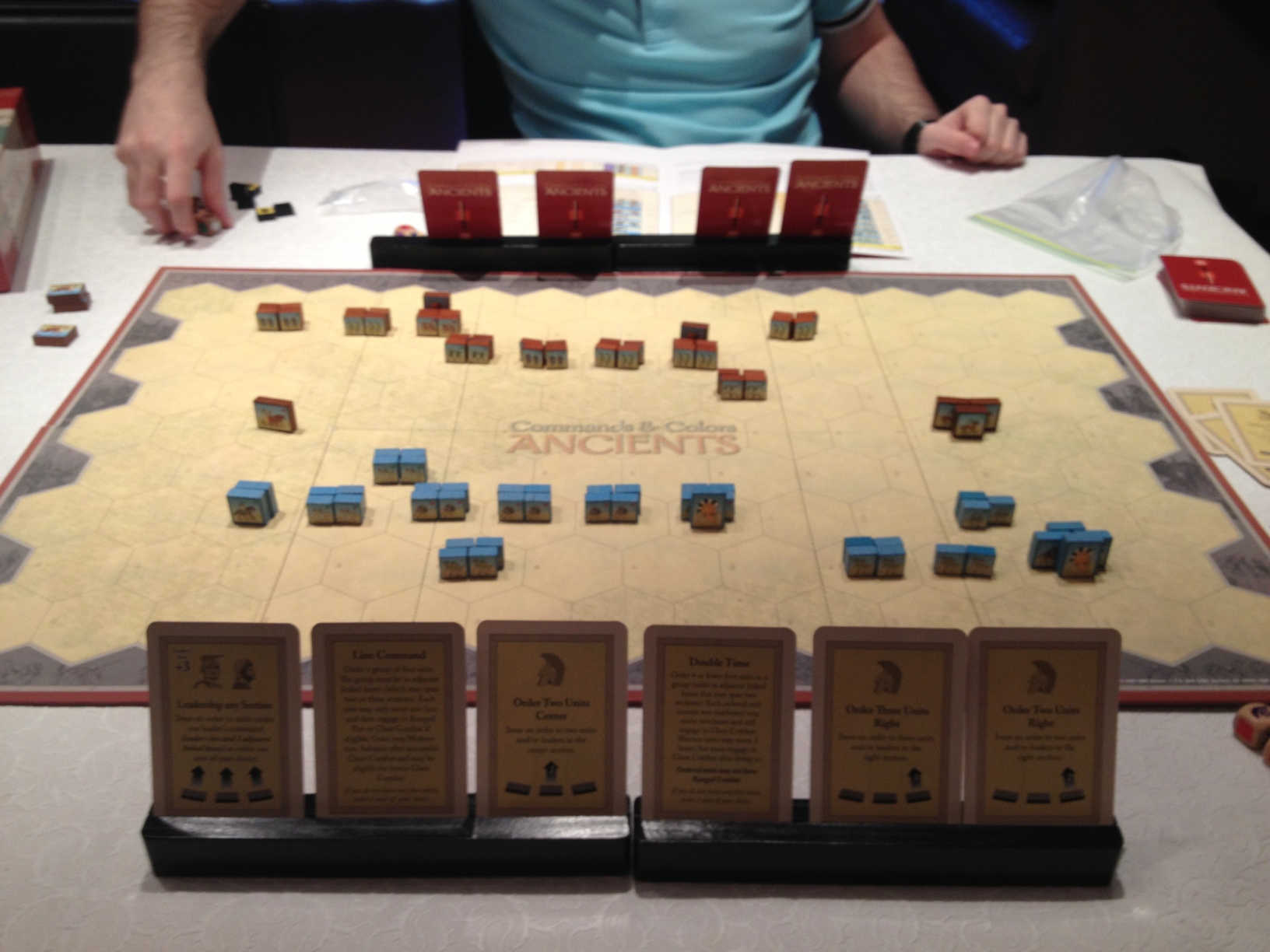
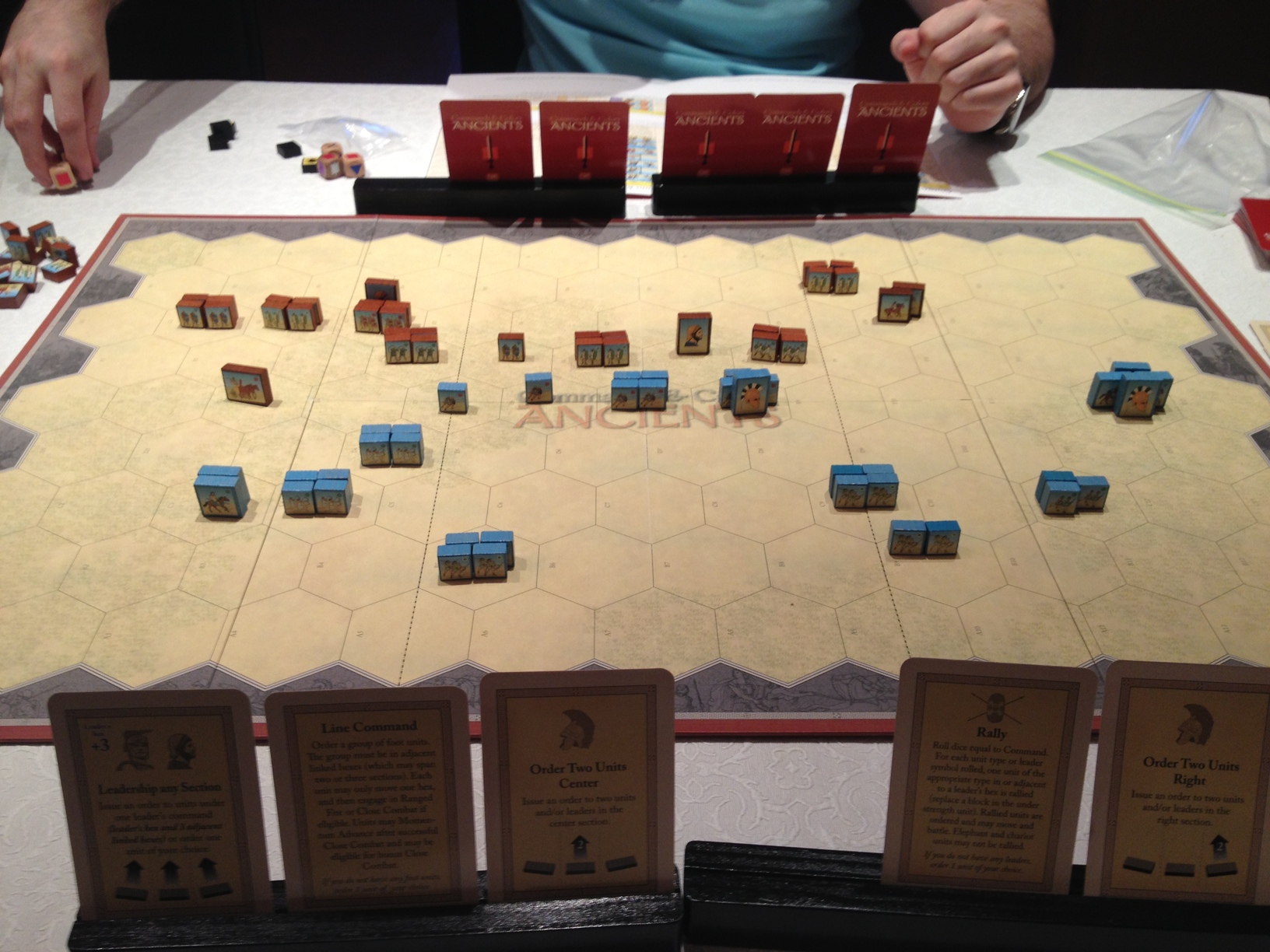
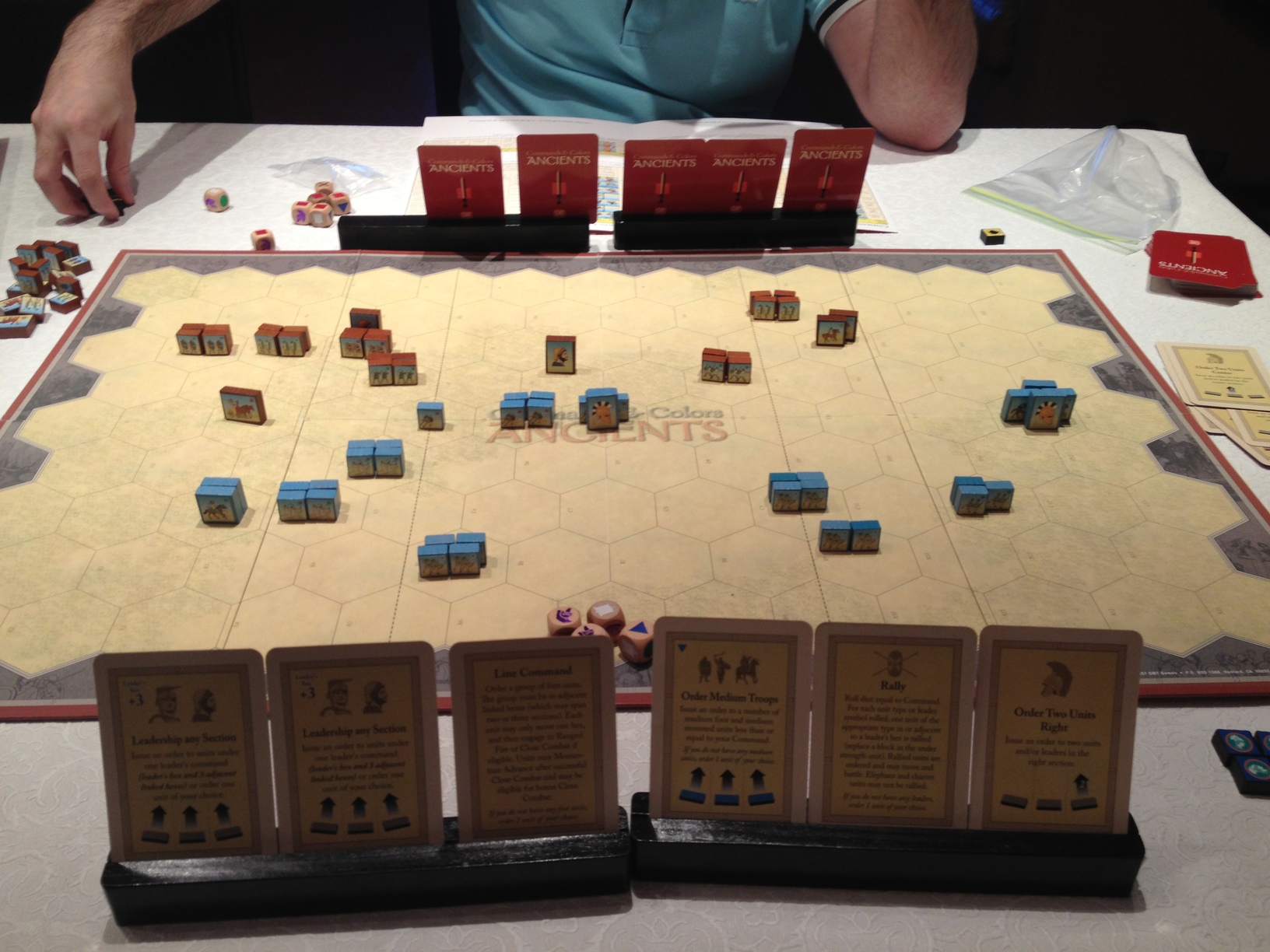
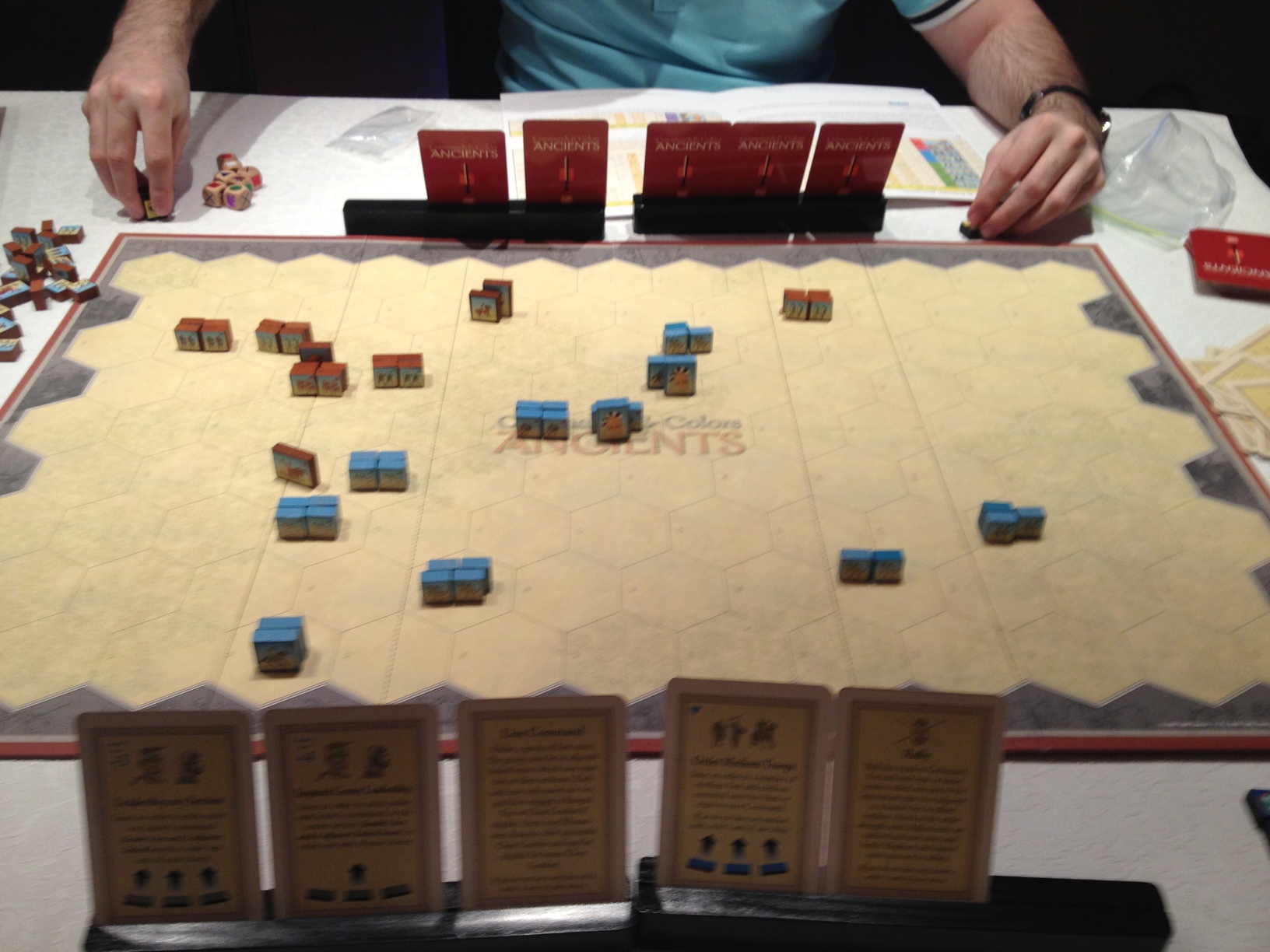
 Flax |
Flax |  Post a Comment |
Post a Comment | 
